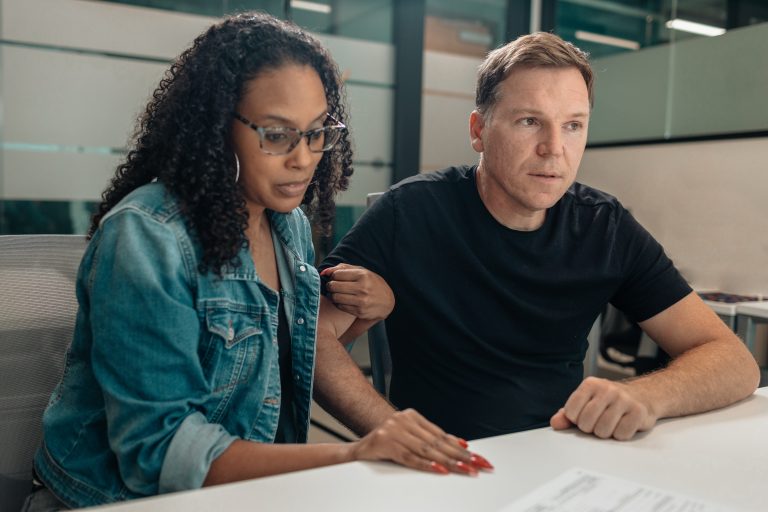11 Essential Family Therapy Activities
Family therapy, also known as family counseling or marriage and family therapy, is a specialized form of psychotherapy that aims to help families and couples improve communication, resolve conflicts, and strengthen their relationships. It’s a valuable resource for individuals of all ages, offering a safe space to address issues and work towards healthier dynamics.
In this article, we will consider 11 essential family therapy activities that can be instrumental in enhancing relationship-building, communication, and overall family well-being. These activities are designed to be accessible and beneficial for both adults and children.

What is Family Therapy Activity?
Family therapy activities are structured exercises and interventions used in family therapy sessions to improve communication, resolve conflicts, and strengthen relationships within families. These activities are designed to engage family members in a collaborative process aimed at addressing issues and fostering healthier dynamics.
How Does Family Therapy Activity Work?
Family therapy activities work by providing a structured framework for families to address their challenges and concerns. These activities are facilitated by a trained therapist who guides the family through exercises, discussions, and problem-solving techniques. By actively participating in these activities, family members can gain insights, develop better communication skills, and work together to find solutions to their issues.
11 Essential Family Therapy Activities
1. Family Meetings
Objective: Encourage open dialogue and problem-solving within the family.
Family meetings are a cornerstone of family therapy. Gather the family together regularly to discuss concerns, share experiences, and collaborate on solutions. It’s an opportunity for every family member to have a voice and contribute to decision-making.
2. Active Listening Exercises
Objective: Improve communication by learning to listen attentively.
Active listening activities involve one family member speaking while others listen without interrupting. Afterward, participants shared their understanding of what was said. This practice fosters empathy and better understanding among family members.
3. Role Reversal
Objective: Enhance empathy by stepping into each other’s shoes.
In role reversal exercises, family members take on each other’s roles and responsibilities for a designated period. This helps individuals gain insight into the challenges faced by others and encourages empathy.
4. Family Journaling
Objective: Promote self-expression and reflection.
Provide a journal for each family member to write down their thoughts and feelings. This can be a private space to process emotions and can lead to more meaningful discussions during therapy sessions.
5. Art Therapy
Objective: Facilitate expression of emotions and creativity.
Art therapy activities, such as drawing, painting, or sculpting, can provide a non-verbal outlet for family members to express themselves. It can be especially helpful for children who may find it challenging to communicate verbally.
6. Conflict Resolution Workshops
Objective: Teach constructive ways to manage conflicts.
Workshops on conflict resolution techniques can help family members learn how to address disagreements without resorting to harmful behaviors. These skills can improve communication and reduce tension.
7. Communication Games
Objective: Make learning about communication fun and engaging.
Games like “communication bingo” or “communication Jenga” can be used to teach and practice effective communication skills. They make the learning process enjoyable for both adults and children.
8. Family Genogram
Objective: Visualize family relationships and history.
A genogram is a family tree that includes information about family members’ relationships and significant events. Creating a genogram can help family members understand their family dynamics and history better.
9. Mindfulness and Relaxation Exercises
Objective: Reduce stress and promote emotional well-being.
Mindfulness and relaxation exercises can be valuable for family therapy. Techniques such as deep breathing and guided imagery can help family members manage stress and stay grounded during challenging times.
10. Problem-Solving Scenarios
Objective: Practice collaborative problem-solving.
Present real or hypothetical scenarios and encourage family members to work together to find solutions. This activity can improve teamwork and problem-solving skills.
11. Family Appreciation Rituals
Objective: Foster gratitude and strengthen emotional bonds.
Regularly set aside time for family appreciation rituals, where each member expresses gratitude and appreciation for others. This can create a positive atmosphere and reinforce the family’s emotional connection.
What to Avoid During Family Therapy Activities: 7 Pitfalls to Steer Clear Of
1. Blame and Accusations
Avoid playing the blame game: It’s easy to fall into the trap of blaming one another for family issues. Instead, focus on discussing problems as a collective challenge that the family can work together to address. Blame and accusations can lead to defensiveness and hinder progress.
2. Interrupting and Dominating Conversations
Avoid dominating discussions: Family therapy is most effective when everyone has an opportunity to speak and be heard. Avoid interrupting or monopolizing conversations. Encourage active listening and allow each family member to express their thoughts and feelings.
3. Lack of Empathy
Avoid dismissing others’ feelings: Empathy is a cornerstone of effective communication. Dismissing or belittling someone’s emotions can create resentment and further strain relationships. Instead, acknowledge and validate each other’s feelings, even if you don’t fully understand them.
4. Judgment and Criticism
Avoid harsh judgment: Criticizing and judging family members can create a hostile atmosphere. Family therapy is a safe space for open dialogue, so aim to offer constructive feedback rather than harsh criticism. Focus on solutions rather than dwelling on faults.
5. Dwelling on the Past
Avoid excessive focus on past grievances: While it’s essential to address past issues, dwelling on them can hinder progress. Family therapy activities should primarily focus on the present and the future. Learn from the past but work towards positive changes moving forward.
6. Not Following Through
Avoid making promises you can’t keep: During therapy, family members may commit to making changes in their behavior or communication. It’s crucial to follow through on these commitments. Failing to do so can erode trust within the family.
7. Avoiding Uncomfortable Topics
Avoid avoidance: Family therapy is the ideal place to discuss uncomfortable or sensitive subjects. Avoiding these topics can lead to unresolved issues. Instead, embrace the opportunity to address challenging matters in a supportive environment.
Tips for Ensuring the Success of Family Therapy Activities
1. Choose a Skilled Family Therapist:
- The therapist’s expertise is crucial. Look for a licensed family therapist with experience in addressing your specific concerns or issues.
2. Set Clear Goals:
- Define specific goals for your family therapy. What do you hope to achieve? Clear objectives help guide the therapy process.
3. Commit to Consistency:
- Attend therapy sessions regularly and punctually. Consistency is key to seeing progress and reaping the benefits of therapy activities.
4. Encourage Open Communication:
- Promote honesty and open dialogue among family members. Encourage everyone to express their thoughts and feelings respectfully.
5. Actively Participate:
- Engage fully in therapy activities. Active participation is essential for gaining insights and building better communication skills.
6. Be Patient:
- Change takes time. It is important to understand that family therapy is a process, and improvements may not happen overnight. Thus, exercise patience with yourself and your family members.
7. Practice Outside of Sessions:
- Apply the skills learned in therapy to everyday life. Make it a habit to practice effective communication and conflict resolution in real-world situations.
8. Be Willing to Compromise:
- Recognize that compromise is often necessary in family dynamics. Be open to finding a middle ground and making concessions when appropriate.
9. Manage Expectations:
- Family therapy can be challenging, and there may be setbacks. Understand that progress is not always linear, but therapy can still be effective in the long run.
FAQs
Q: How do I host a family therapy session?
A: Hosting a family therapy session typically involves these steps:
a. Find a Qualified Therapist: Search for a licensed family therapist with expertise in your specific concerns.
b. Schedule an Appointment: Contact the therapist’s office to schedule a session that works for all family members.
c. Prepare for the Session: Discuss with your therapist any specific issues or goals you want to address during the session.
d. Attend the Session: Show up on time and be open to participating in the activities and discussions guided by the therapist.
e. Follow-Up and Consistency: Family therapy often requires multiple sessions, so commit to attending regularly to see progress.
Q: What does family therapy involve?
A: Family therapy involves a range of therapeutic techniques and activities aimed at addressing family dynamics and improving relationships. It often includes activities like open communication, conflict resolution, role-playing, and various exercises to promote understanding and empathy among family members. The therapist tailors the approach to the specific needs of the family.
Q: What are the basic techniques of family therapy?
A: Basic techniques of family therapy include:
a. Communication Skills: Teaching family members effective communication and active listening techniques.
b. Conflict Resolution: Helping families develop constructive ways to resolve conflicts and disagreements.
c. Genogram Creation: Building a visual family tree to explore relationships and family history.
d. Role Reversal: Encouraging family members to temporarily take on each other’s roles to gain perspective.
e. Journaling: Using journaling as a tool for self-expression and reflection.
f. Art and Creative Therapy: Incorporating creative activities like drawing or painting to express emotions.
g. Mindfulness and Relaxation: Teaching relaxation techniques to manage stress and improve emotional well-being.
Conclusion
Incorporating these 11 essential family therapy activities into your family’s routine can lead to improved relationship-building, enhanced communication, and overall well-being. Remember that family therapy is a dynamic process, and progress may take time. With patience, commitment, and the guidance of a qualified therapist, your family can work toward healthier, happier relationships.
Family therapy activities for relationship-building, communication, and personal growth can be adapted to suit your family’s unique needs and circumstances. The key is to create a safe and supportive environment where everyone can grow and thrive together.
If you’re considering family therapy, consult with a licensed therapist who specializes in family counseling. They can help you tailor these activities to your family’s specific goals and challenges, ensuring that you receive the most effective and personalized support.
Finally, family therapy activities are powerful tools for fostering healthier family dynamics, enhancing communication, and building stronger relationships. By incorporating these activities into your family’s routine, you can create a more harmonious and loving environment for everyone involved.





